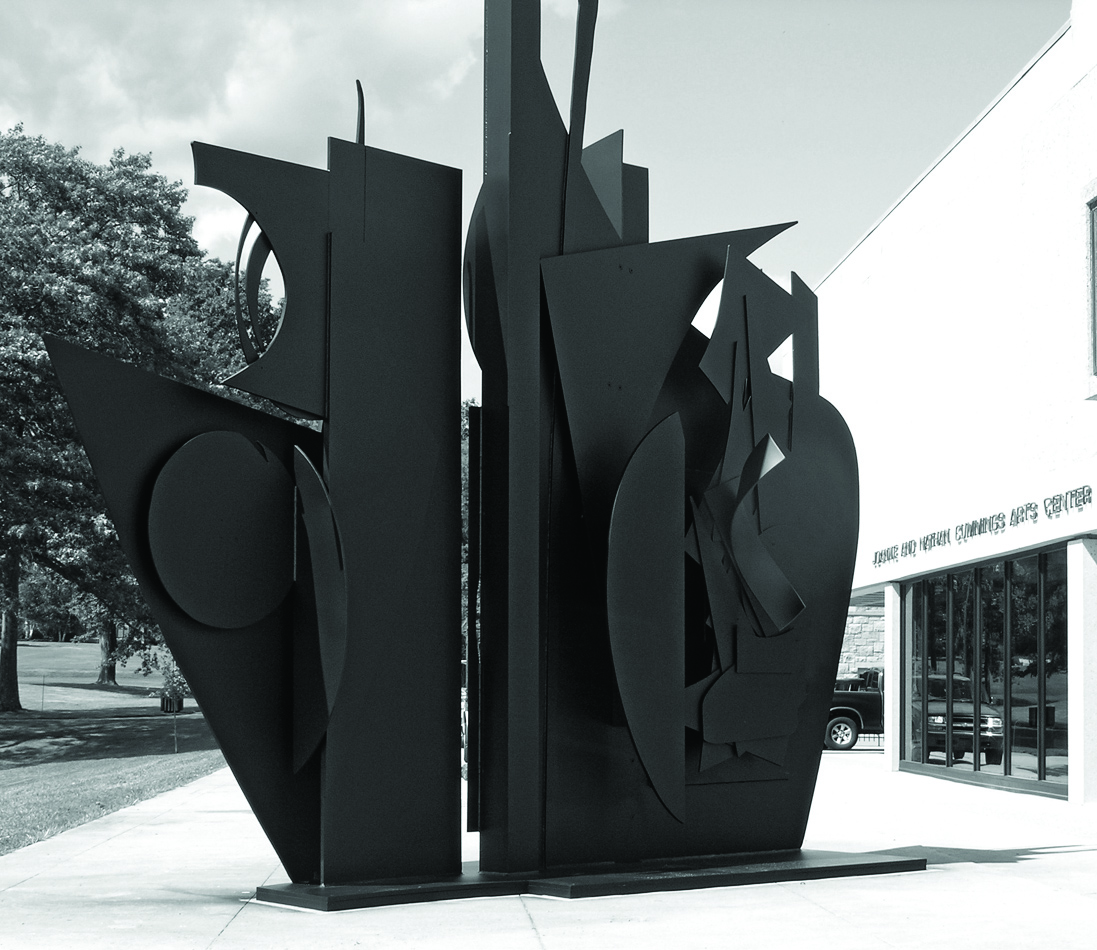Louise Nevelson (1899-1988) was an Abstract Expressionist and conceptual artist who emigrated from Russia to the United States in 1905. Living in New York City, Nevelson connected with key art figures over the course of her education and career, including Kenneth Hayes Miller, Kimon Nicolaides, Hans Hoffman, Diego Rivera and Chaim Gross. These artists exposed Nevelson to new methods and ideas that influenced her own practice, exposing her to a variety of medium, and ultimately inspiring Nevelson to develop her personal investigations.
Her focus on three-dimensional works flourished during the 1930s, when she produced puzzle-like monochromatic wooden assemblages. In the late 1960s, Nevelson was commissioned by Princeton University to create her first major outdoor piece. According to curator Brooke Kamin Rapaport, after the completion of this outdoor sculpture Nevelson said, “Remember, I was in my early seventies when I came into monumental outdoor sculpture…I had been through the enclosures of wood. I had been through the shadows. I had been through the enclosures and come out into the open.”
Over the course of her career, Nevelson had several solo and group art shows at major museums across the globe and is deemed as one of the most important figures in 20th century American sculpture. Connecticut College is the lucky recipient of one of two of her monumental outdoor sculptures in the state. Untitled (1976) was originally created at the Lippincott Foundry in North Haven, Connecticut and arrived at Connecticut College in 1995 under a loan after the Foundry closed. Comprised of large pieces of black geometric and curvilinear steel shapes, the monochromatic Untitled occupies the west patio of Joanne and Nathan Cummings Arts Center.
The sculpture was restored once in 2006. TIn 2009, the Sculpture and Decorative Conservation Services LLC assessed the high priority piece and noted its current condition as “Poor due to graffiti but otherwise excellent.” After a personal investigation of the base’s condition, many areas of the base are peeling away and evidence of rust is present. The company recommends, “The graffiti should be removed and the scratches inpainted to become as invisible as soon as possible. It would be worthwhile asking the firm that did the restoration in 2006 to send a small quantity of the paint formulation to Connecticut College for use by a conservator.” From afar this Abstract Expressionist assemblage of large, black steel shapes bears no visual decay, and consequently looks solid and relentless. Only when one approachs and pays attention to the massive piece does the damage and deterioration become discernible. •









